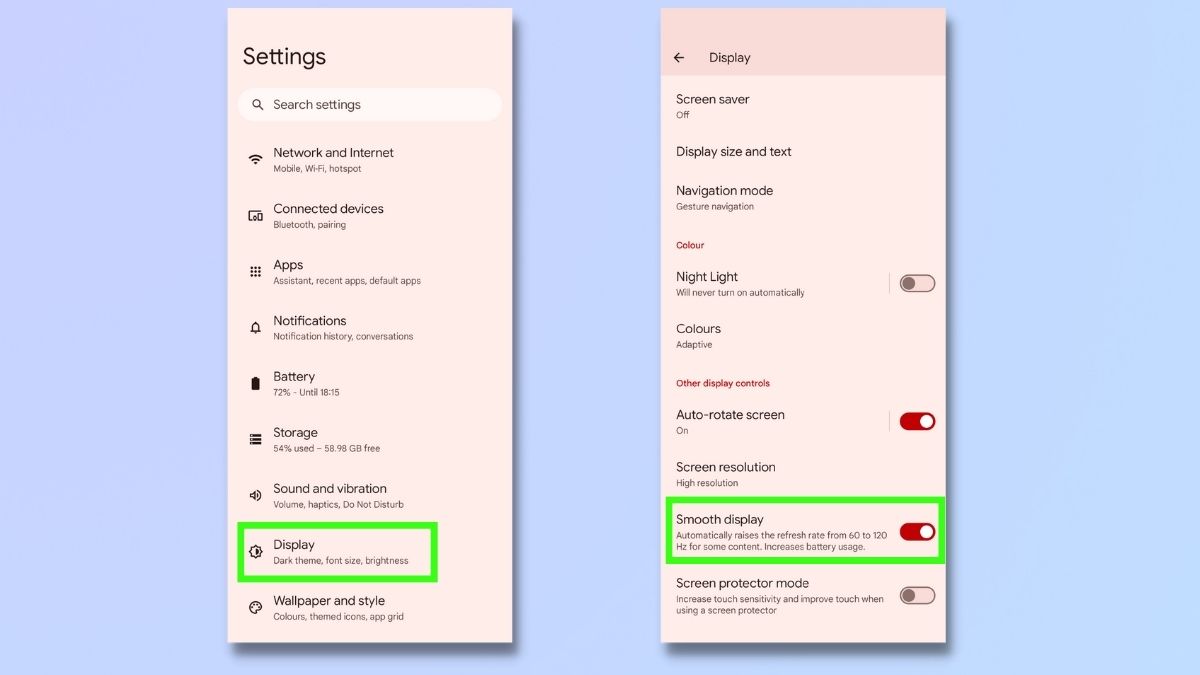
When checking the technical specifications of a new phone, you may not pay much attention to the refresh rate. However, these specifications can make a big difference in the speed, smoothness, and responsiveness of many of the applications you use.
What’s more, your phone probably doesn’t give you the highest refresh rate by default. High refresh rates consume a lot of battery power, and even the best phones are usually set up to strike a balance between battery life and user experience.
Fortunately, if you want to increase the refresh rate, you can use Android’s hidden menu, called Developer Options, to take matters into your own hands. The Developer Options menu is not enabled by default on Android and is hidden in plain sight – you need to repeatedly tap a specific menu area to enable it, like a secret code (we’ll show you how to do that below).
Once turned on, developer options give you the ability to customize all sorts of aspects of your phone like a true power user. This makes sense, as developer options are designed for users who need full control of the device for development, testing, and repair.
To learn how to force your Android phone to use the maximum refresh rate, read our step-by-step guide below.
How to force maximum refresh rate on Android phones using developer options
NB: These steps were performed on a Google Pixel 8. The steps will be similar for other devices but may appear slightly differently on your screen.
Before you start: Check the Smooth View option
(Photo: © Future)
Before we move on to enabling developer options, it’s worth taking a look at the option that comes standard on your Android phone. This is a seamless display option. Go to settingsthen Click on the offer And Switch to smooth view.
Smooth View automatically increases the refresh rate for some content. For example, the Google Pixel 8’s refresh rate can be increased from 60Hz to 120Hz. However, this is not available for all apps or content. When we tested it with YouTube videos, the screen’s refresh rate remained at 60Hz.
However, it’s worth checking if this is enabled on your phone before going the developer options route, as there’s a chance it might solve your issues.
But to really make sure your phone is always running at maximum refresh rate, you’ll need to switch to developer mode and force the maximum refresh rate. We’ll cover that in the next steps.
1. Go to Settings > System > About phone > Build number
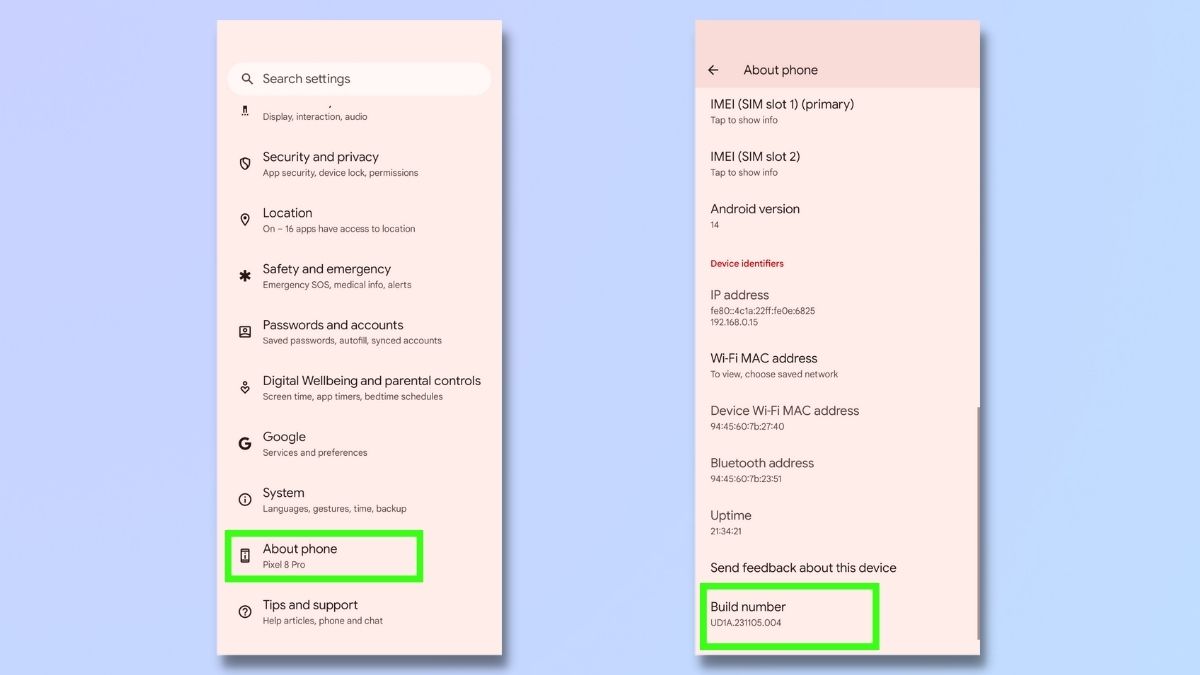
(Photo: © Future)
To turn on developer options, Open the Settings app And Click on System. then Select About phone.
Move your mouse down And Press Build Number repeatedly Until you get a pop-up message telling you to enable developer mode. For more comprehensive instructions on how to do this, read our article on how to enable Android developer options.
2. Go back to System > Developer Options
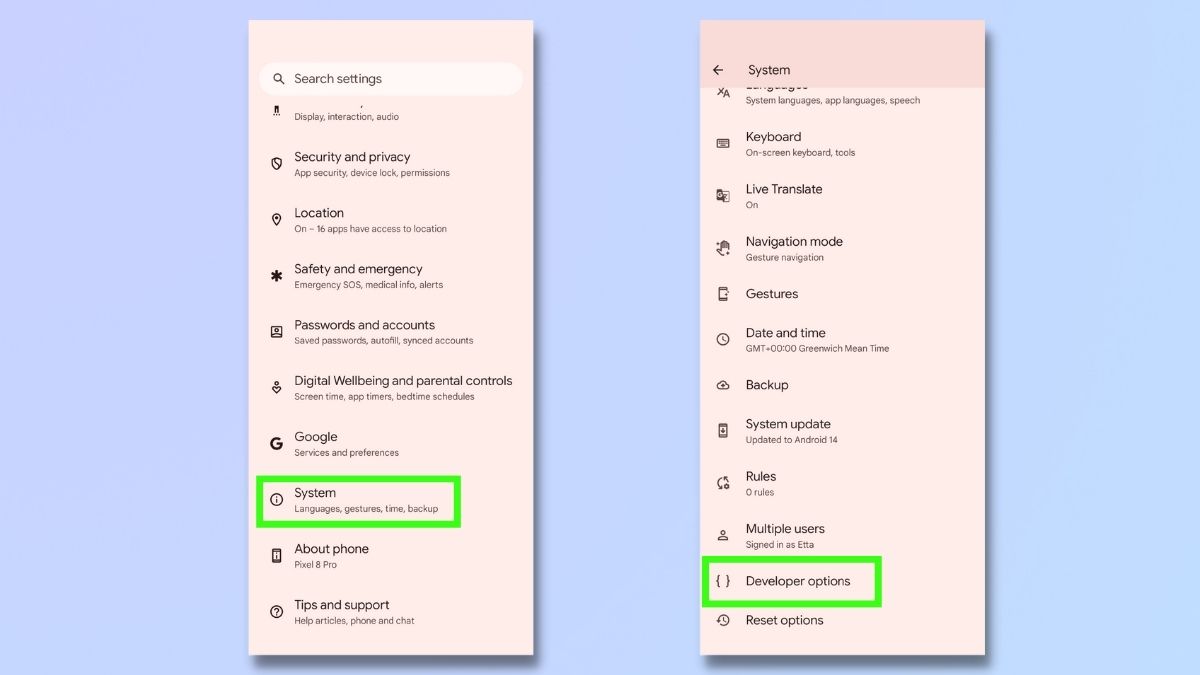
(Photo: © Future)
Now that you’re in developer mode, Return to the system page In your settings and Select Developer Options.
3. (Optional) Switch to Show refresh rate
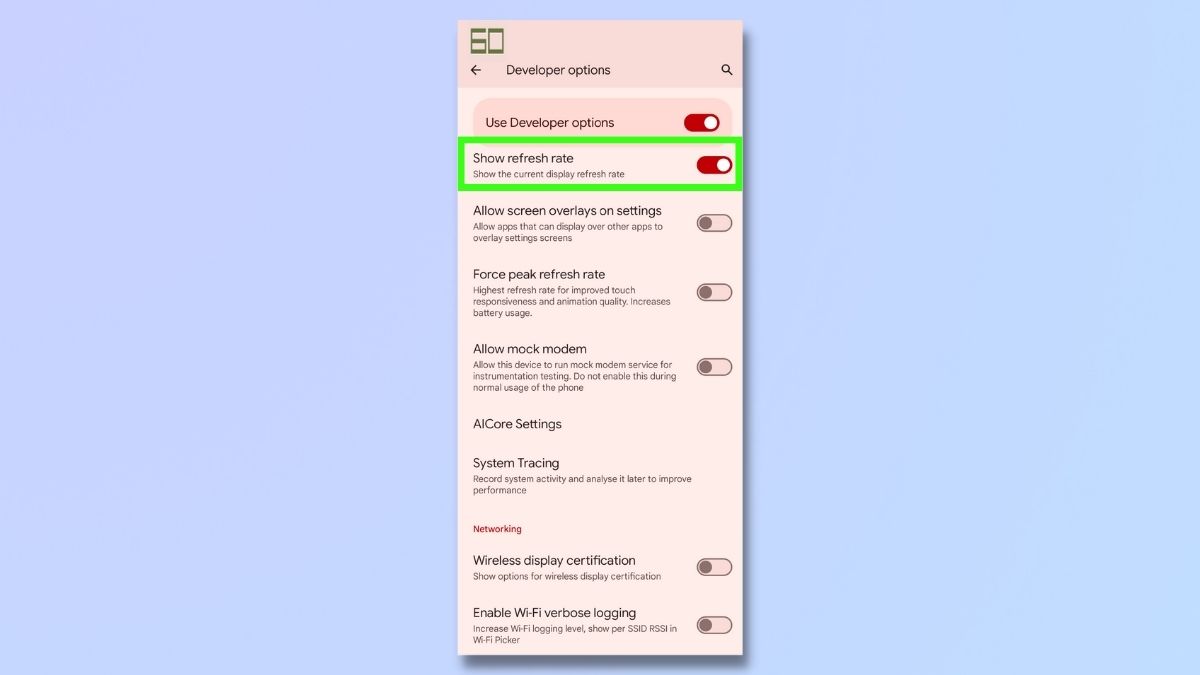
(Photo: © Future)
From the developer options screen, we can enable Show refresh rate. Once enabled, this displays the refresh rate in the top left corner of your screen.
To enable this, Switch to Show refresh rate.
4. (Optional) Display the refresh rate in the Media app
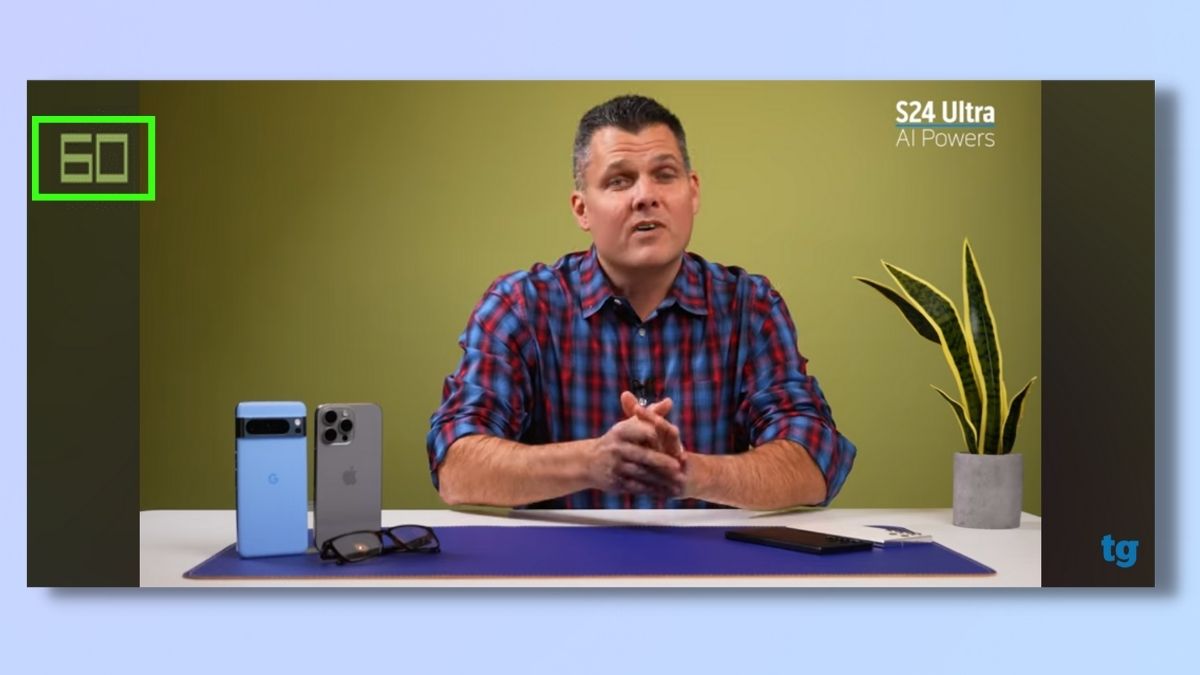
(Photo: © Future)
Now you can Check your refresh rate in real timeto learn how to perform screen refresh while running applications.
The screenshot above is from Tom’s Guide YouTube channel. As you can see, the refresh rate is 60Hz, which is much lower than the Google Pixel 8’s maximum refresh rate of 120Hz.
5. In Developer Options, toggle on Force maximum refresh rate

(Photo: © Future)
To get the maximum refresh rate for your phone, Return to the developer options screenAnd Switch to Force maximum refresh rate.
6. Display maximum refresh rate in media app
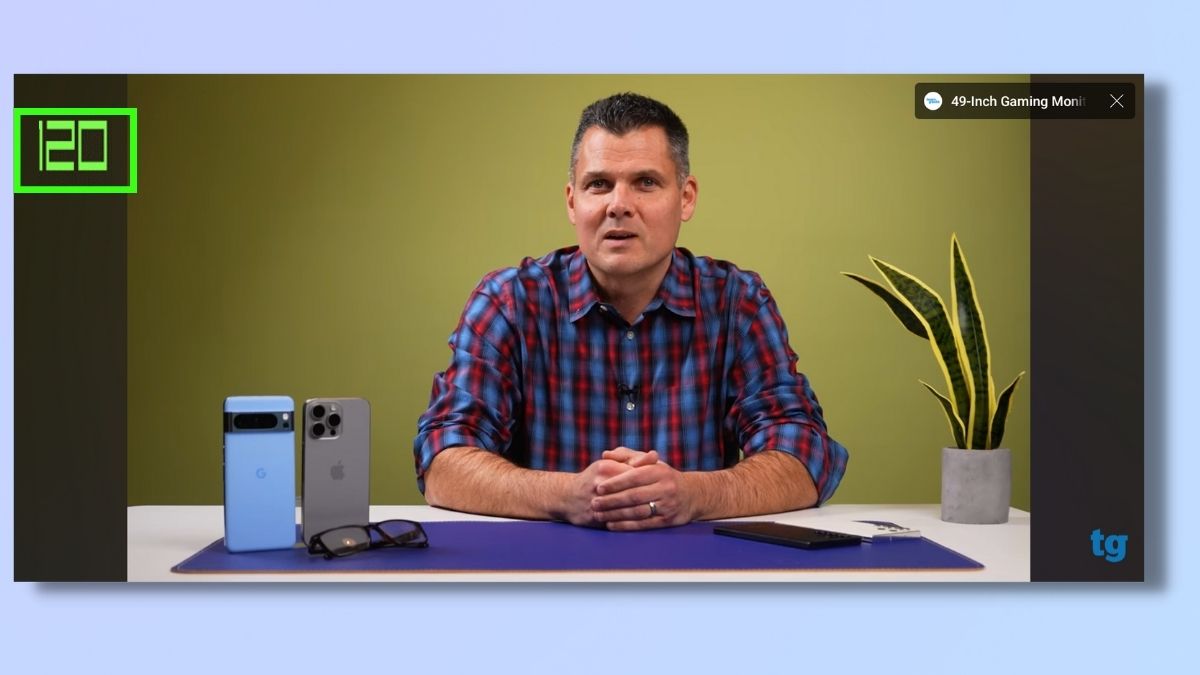
(Photo: © Future)
As you can see, now that Force Max Refresh Rate is enabled, the refresh rate on this YouTube video is now 120Hz.
So, what exactly is refresh rate?
Screen refresh rate refers to the number of times the screen is redrawn or refreshed per second. It is measured in hertz (Hz), where Hz equals one refresh cycle per second. A higher refresh rate generally results in a smoother and more responsive visual experience.
For example, 60 Hz means that your screen refreshes 60 times per second. This has been the standard refresh rate for many years and is still common in many devices.
However, as phone technology improves, many devices are capable of up to 120Hz refresh rate, providing a smoother and more responsive experience compared to devices with a 60Hz refresh rate.
The higher refresh rate is especially noticeable during activities such as scrolling through content, playing games, and navigating the UI. It can reduce motion blur, provide smoother animations, and improve overall responsiveness.
You should keep in mind that, even with developer options, you will never be able to exceed the maximum refresh rate that your device is capable of. If your phone only has a maximum refresh rate of 90Hz, you won’t be able to reach 120Hz.
It’s also important to note that increasing the refresh rate may have an impact on battery life, as the screen must refresh more times per second, requiring additional power. To learn more about your phone’s battery, read our article on how to check Android battery health.
Increasing the refresh rate will not make a noticeable difference in all applications. But if you play fast-paced games or use virtual apps, smoother visuals and faster touch response may be exactly what you need to give you a better and more enjoyable experience.
To discover more things you can do with your Android phone, check out our guides on mirroring selfies on Android, using the Android in-screen magnifier, and using the Magic Editor on the Google Pixel.
Are you looking to make the most out of your Android device’s display? There’s a hidden feature that can unlock your phone’s maximum refresh rate, providing you with a smoother and more responsive experience. By enabling this feature, you can take full advantage of your device’s capabilities and enjoy a heightened level of performance. Don’t miss out on this opportunity to enhance your user experience – unlock your phone’s maximum refresh rate now.

